

You can take a "virtual tour" of Bohemian National Cemetery by selecting links in the map below. The links (red numbers) lead to descriptions with pictures and text of the features at that location.
If you plan a visit you can also download our map and guide brochure: Map and Guide Brochure.
You can also explore much of the cemetery using Google Maps street view. Google street view at BNC


Bohemian National Cemetery was founded in 1877 to provide for the needs of the Bohemian community. It is now open to all on a non-sectarian basis. Mausoleums, monuments and statuary by distinguished artists are found throughout the cemetery's 124 acres. Bohemian National Cemetery was added to the National Register of Historic Places in 2006.
 Return to the map
Return to the map
The original stone gatehouse from 1878 was replaced in 1893 by a gothic revival structure designed by Jan Krivanek.

A 1907 addition designed by Anton Rusy, added men's and women's waiting rooms and restrooms. John Anton Mallin planned and supervised the interior decoration.

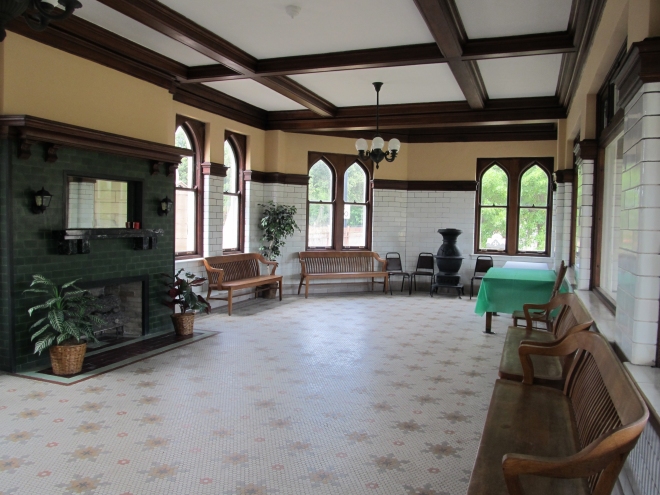
(You can read more on the history of the gatehouse by clicking this link)


The office building was dedicated on May 22, 1926. Before remodeling the building included an attached "palm house" for tropical plants and a goldfish pond. The interior was remodeled extensively in 1961,

The exterior of the building is in the Classical Revival style

 Return to the map
Return to the map
The crematorium/columbarium cornerstone was laid December 1913. The first cremation was in November 1914. The building was dedicated in 1919.
The exterior of the building is in a Renaissance Revival style and is reminiscent of a basilica in its layout.

The interior is on two levels. The lower level has a columbarium, the Marble Room, and the crematory retorts.
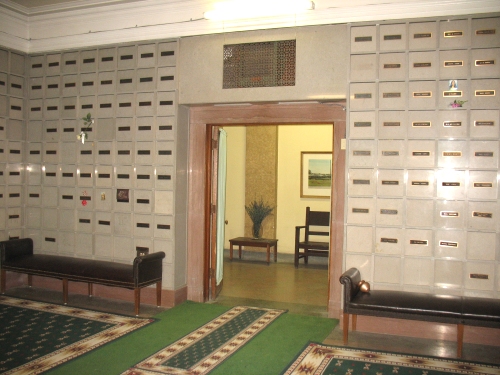
The upper level has several columbarium rooms and a large Ceremony Hall.


The Ceremony Hall interior is decorated with fraternal insignia, stained glass windows, and other paintings designed by John A. Mallin.
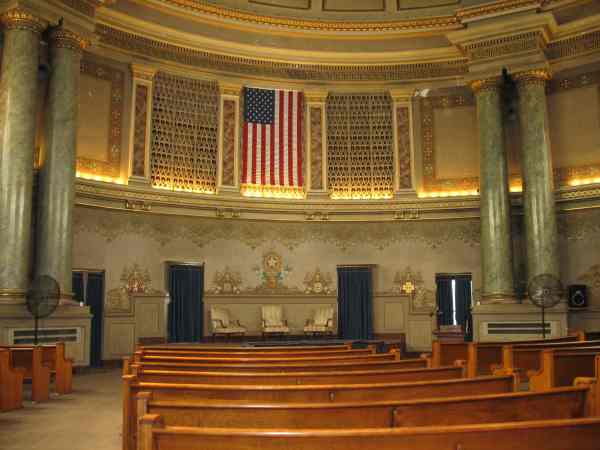
You can learn more about the history of the crematorium/columbarium and John Mallin by clicking this link.
You can puirchase a copy of our book Introduction to Crematorium/Columbarium Building using our Store.
The Mother statue is located in front of the crematorium/columbarium.

Renowned Czech-American sculptor Albin Polasek was commissioned by the cemetery association to produce the statue for the cemetery's 50th anniversary in 1927.

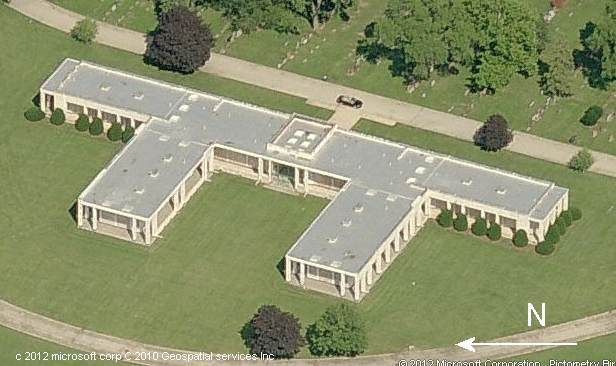


The Masaryk Memorial Mausoleum was dedicated in 1956 and was constructed to honor Thomas Garrigue Masaryk, the first president of the Republic of Czechoslovakia.
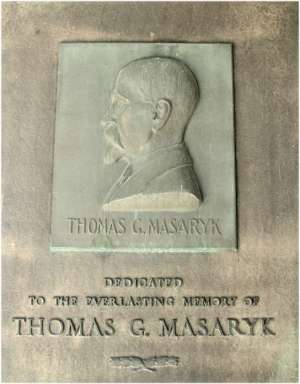
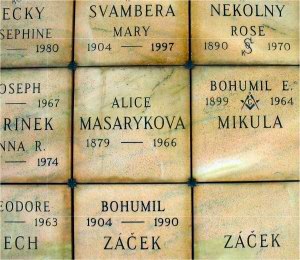
Masaryk´s daughter, Alice Garrigue Masaryk, was inurned here and repatriated to her native land after the 1989 Velvet Revolution restored democracy to Czechoslovakia.
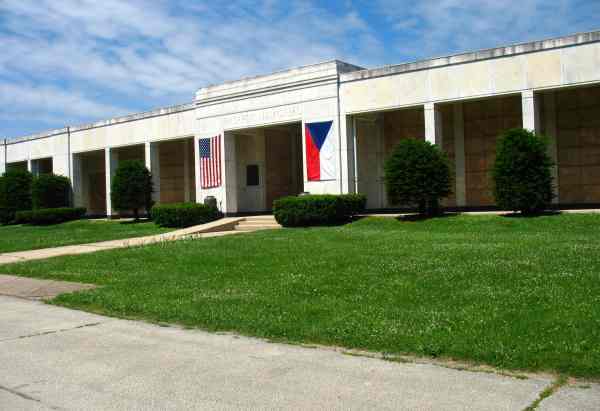
Two wings were added in 1975 to provide additional niches for the Columbarium.
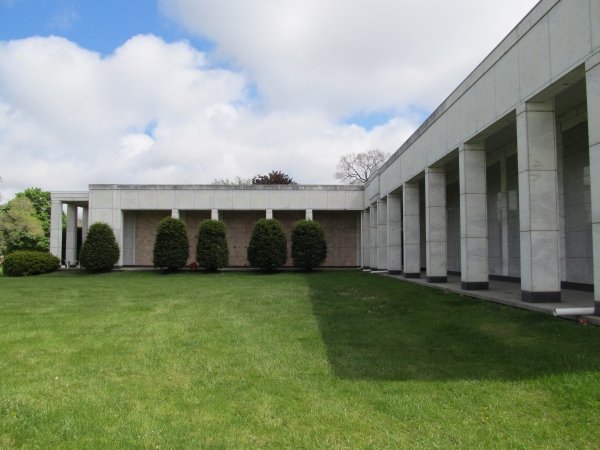
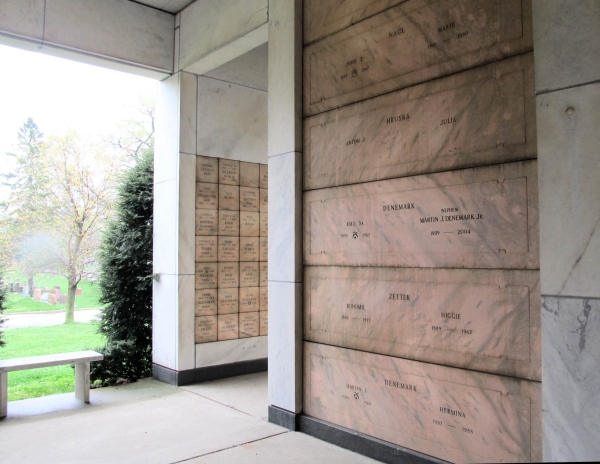
 return too the map
return too the map
The first public monument in the cemetery was dedicated in 1885 in honor of Ladimir Klacel. Klacel was a Bohemian philosopher and teacher who was also mentor to his younger colleague, Friar Gregor Mendel. Klacel himself is buried in Belle Plaine, Iowa, but Ladimir Klacel Circle is the cemetery’s burial place of honor.

The central monument is topped by a white marble bust of Klácel, sculpted by artist František Hess.

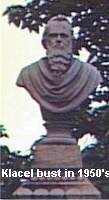
Robert H. Vickers, author of History of Bohemia, is the only non-Czech to be buried in Klacel Circle and was the first person to be honored with burial there on October 17, 1897. The burials are laid out along compass points with Vickers at the East.
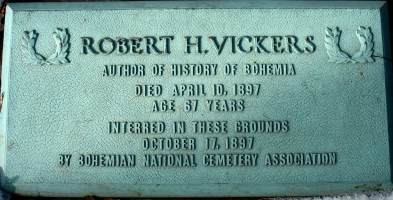
To the South is Frantisek Zdrubek. Zdrubek was the leader of The Congregation of Bohemian Freethinkers of Chicago, Svobodna Obec. Zdrubek called on all Chicago Bohemian societies to come together and create a “free national cemetery, where any Czech could be buried without regard to religion.” His plaque lists him as a co-founder of the Cemetery.

To the North is Frank Boucek, president of BNCA from 1932-1944
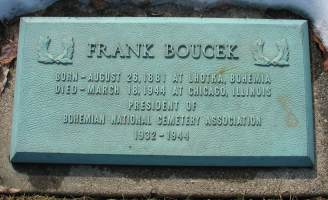
To the West, Dr. Antonin Mueller, a delegate to BNCA

Northwwest, Dr. Anton Radešinksý, another prominent Freethinker and member of the cemetery’s crematorium building committee.

Northeast, Václav Pohl, the first president of the Czechoslovak Society of America.

Dr. Jaroslav E.S. Vojan, a Freethinker leader and organizer of the Bohemian Arts Club was buried here but was later moved.


The memorial was designed and fabricated by Vernon T. Johnson of Stonecraft Industries with architectural assistance from Joseph R. Bednarik. Erected by BNCA in observance of its 75th anniversary, it honors those who served in World Wars I and II and was dedicated on August 21, 1952.
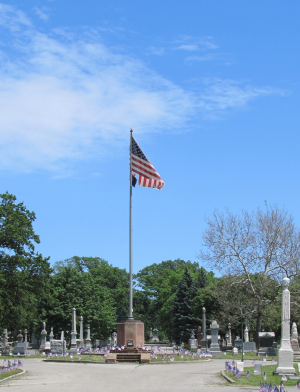
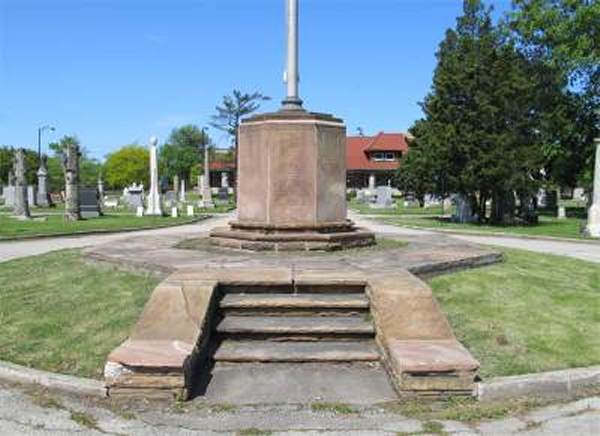
The sandstone memorial has a 40 foot aluminum flagpole on an octagonal base. Each side of the base has an illustration of a major point in each of the wars. The frieze depicts the Four Freedoms.





The Civil War Monument, originally called the Bohemian Soldiers' and Sailors' Monument, was dedicated on May 29, 1892. It was the second public monument erected at the cemetery.

Designed by artist, Joseph Klir, the bronze statue represents a private soldier in full fatigue uniform, holding a flag in his left hand and a musket with bayonet in his right. The base inscription is "PRO NOVOU VLAST " - for the new country.

 Return to the map
Return to the map

The Spanish-American War Veterans Memorial was erected by public donation to honor the veterans of the Spanish - American War, 1898 and the war in the Philippines, 1899-1902. The bronze figure was designed by sculptor Theodora Ruggles Kitsen (...more) and depicts an American soldier in uniform and gear as worn in the tropics in those wars. At the time of the dedication in September 26, 1926, 45 Spanish-American War veterans were buried at BNC.
The figure stands on a 25 ton red granite boulder from Wausau, Wisconsin. The rock was towed by tractor for 25 miles to the Wausau rail station. From there it was shipped by rail to Chicago. In Chicago, the rock was shaped by Vaclav Vales to resemble a natural boulder.
 Return to the map
Return to the map

The mausoleum was built by the Heller Brothers monument firm and erected in 1929. It was constructed in the popular Art Deco style for the Cermak family after the death of Anton Cermak's wife. In addition to Cermak and his wife, other family members are also entombed here.
Anton Cermak was born in Bohemia and emigrated with his family as an infant. He became active in Chicago politics and was elected mayor in 1931. On February 15, 1933, while riding in a parade with President Franklin D. Roosevelt in Miami, Florida, Cermak was shot by an assassin. He died from his wounds on March 6, 1933. An estimated 150,000 people crowded into the cemetery for his entombment on March 10, 1933.

On October 2, 1933, President Roosevelt and his wife Eleanor made a pilgrimage to the cemetery to place a wreath at the Cermak mausoleum, an act of respect and commemoration for the assassinated mayor that has been repeated by many visiting Czech dignitaries over the years.
An inscription on the marble enclosing Cermak's tomb has the famous last words of Cermak to Roosevelt: "I'm glad it was me instead of you".

The Pilgrim, like The Mother, is a work of Albin Polasek, the Czech-American sculptor who was the first head of the Sculpture Department at the Art Institute.
The sculpture was commissioned to go with the Stejskal-Buchel Mausoleum as a memorial to Frantiska Stejskal, the mother of the family, who died in 1928. The figure depicts an older heavily robed woman walking toward the steps of the mausoleum.

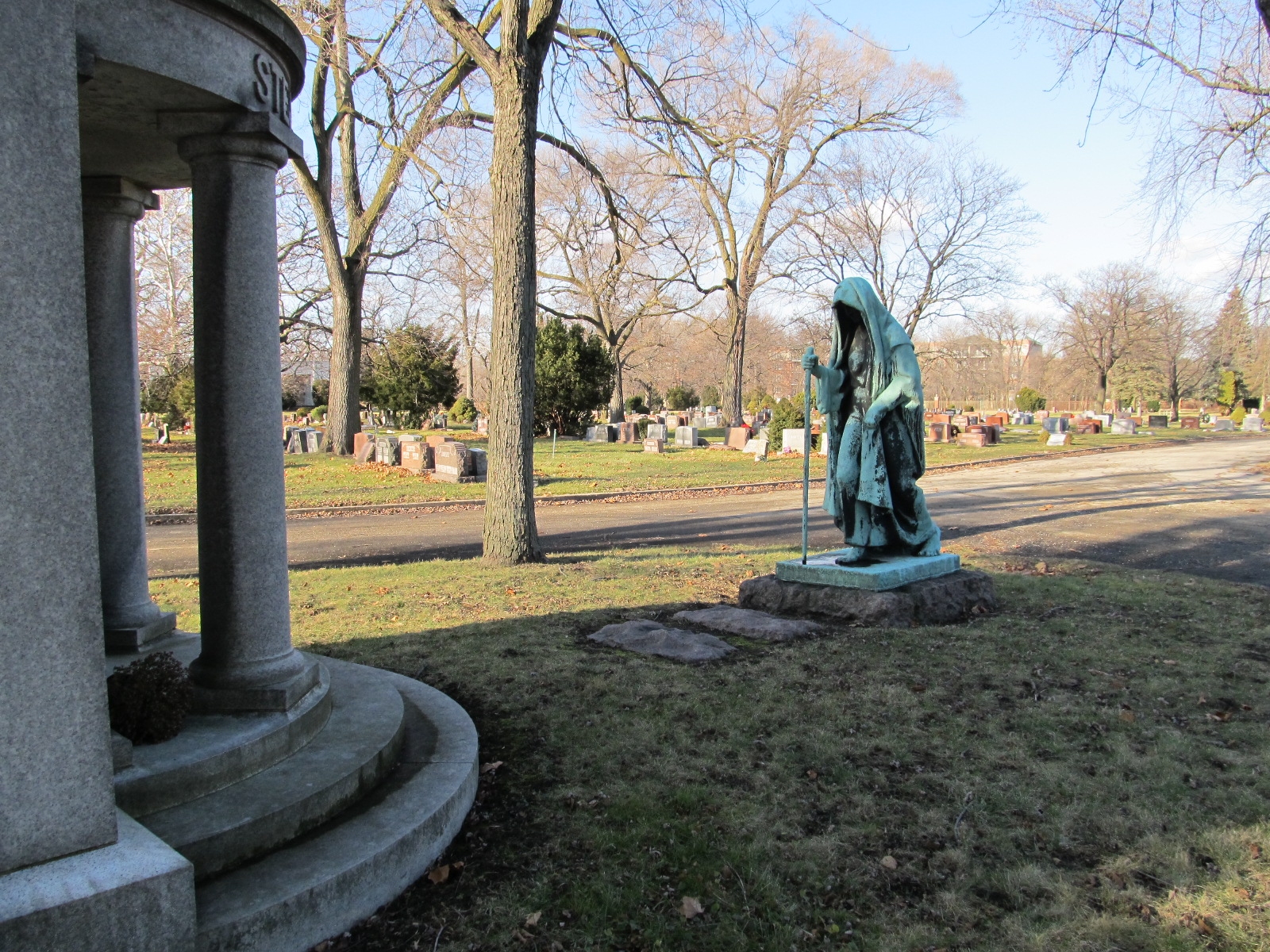

Beyond the Vines was conceived by the late Dennis Mascari, founder of the “Fans Forever” company. It was dedicated April 22, 2009. The 24 foot long wall has ivy, bricks, and seats from Wrigley Field.
Beyond the Vines is an outdoor columbarium for dedicated Cub fans like Russell Adams whose plaque states:
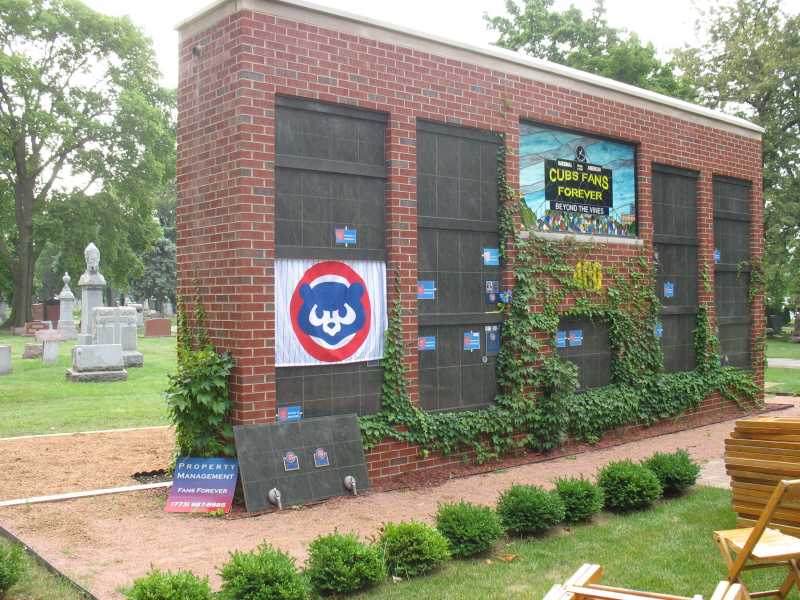
Dennis Mascari died in 2011 and is now front and center in "Beyond the Vines". His plaque reads: "Please tap here after they win".



Resignation is a work of the Czech-American sculptor Mario Korbel.
Mario Joseph Korbel was born March 22, 1882, in Osik, Bohemia. At the age of 18 he emigrated to the United States and settled in Chicago. After five years in the United States he returned to Europe to study at the Royal Academy in Berlin, in Munich, and at the Academie Julian in Paris.
He returned to Chicago in 1909 and opened a studio. Four years later he moved to New York City. He died March 31, 1954.
The Resignation was commissioned in 1910 by Emanuel Beranek, a stock broker, for the family after the death of his father.



Section 16 contains many burials of victims of the Eastland Disaster. The Eastland was the first of three ships chartered to take employees of Western Electric Company on an excursion to Indiana on Saturday, July 24 1915. While still loading passengers at the dock, the ship rolled on its side in the Chicago River.
Although many passengers were rescued by heroic efforts, 844 lost their lives. You can learn more about the Eastland Disaster here.
A large number of the employee victims were young Bohemians including some entire families. Bohemian National Cemetery received 143 victims of the tragedy, the most of any single cemetery.
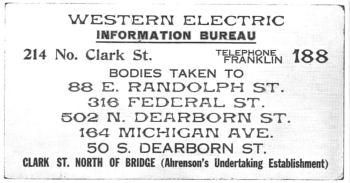


Many of the stones tell a poignant story of lost youth.
The father,
mother, daughter, and son of the Skala family are memorialized here. You can
see their inscription by clicking the Skala stone 

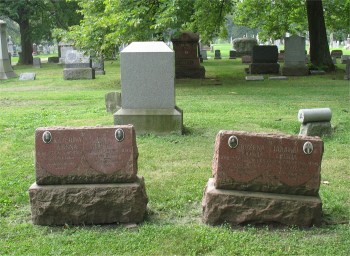
Stones were placed for the Mosna Family. Father and Mother and daughter and son
Three young sisters of the Zastera family, 23-year-old Marie, Antonie, 20, and Julie, 18, are remembered on the Zastera family stone in section 16.



The Skala, Mosna, and Zastera families are but three of many stories in section 16.
A Memorial to the victims, survivors, and heroes of the Eastland Disaster was dedicated at Bohemian National Cemetery Sunday in July, 2015, one hundred years after the Disaster.
You can find out more about the Eastland Memorial at Bohemian National Cemetery at this link: www.friendsofbnc.org/Eastland
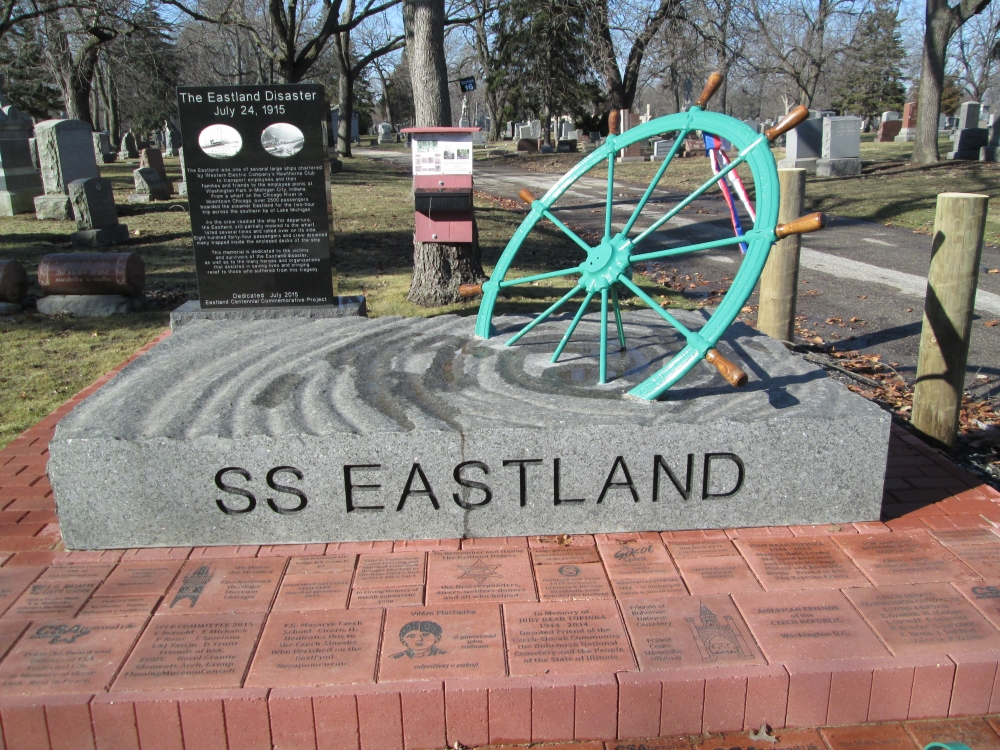


In 1927 several Bohemian lodges of the Independent Order of Odd Fellows and Rebekahs formed a committee to erect a monument to their deceased members. The Great Depression caused a delay in funding so the monument was not begun until 1936.

The Heller Brothers monument firm, who also did the Cermak family mausoleum, erected a curved Tuscan order peristyle, 14 feet tall and 24 feet wide, with fraternal symbols across the west-facing front.

The monument was dedicated May 9, 1937.

You can also explore much of the cemetery using Google Maps street view. Google street view at BNC
Return to the map